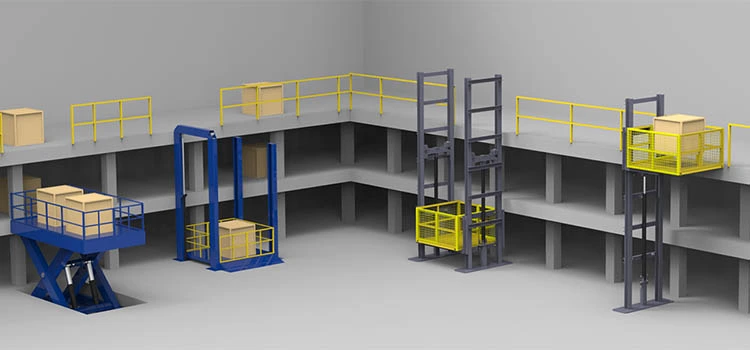London Lift Company: Offering Comprehensive Lift Solutions Throughout the Capital
London Lift Company: Offering Comprehensive Lift Solutions Throughout the Capital
Blog Article
Exploring the Globe of Lifts: Common Issues Faced by Various Lift Mechanisms
As we browse through the vertical transportation systems of contemporary structures, lifts stick out as a crucial part of our lives. However, behind their smooth procedure lies a world of complex devices that can in some cases experience challenges. From hydraulic elevators to grip systems and machine-room-less layouts, each lift kind features its set of usual problems. Understanding these obstacles is vital for guaranteeing the smooth performance of these essential systems. Allow's check out the complexities that underlie the procedure of lifts and the potential problems that can emerge, shedding light on the detailed internet of lift devices.
Hydraulic Lifts
Hydraulic elevators, frequently preferred for low-rise structures, use fluid pressure to regulate the motion of the lift automobile (lift repair companies). This mechanism involves a hydraulic pump pressing oil right into a cyndrical tube, creating the elevator to relocate the preferred instructions. While hydraulic lifts are recognized for their smooth and silent procedure, they do feature their very own collection of common problems
One widespread trouble with hydraulic elevators is oil leak. In addition, concerns with the control system, such as faulty shutoffs or a malfunctioning pump, can trigger disturbances in the lift's motion.
Routine upkeep and punctual fixings are vital to ensure the smooth performance of hydraulic elevators. By dealing with these typical concerns proactively, building proprietors can lessen downtime and make sure the safety and security and effectiveness of their vertical transportation system.
Traction Elevators
When considering upright transport systems in buildings, one more typical type in addition to hydraulic elevators is the traction elevator. Grip elevators run using a system of ropes and weights that relocate the elevator car by grasping onto the hoist ropes. This device enables smoother and quicker upright transportation contrasted to hydraulic systems.
One of the common problems faced by grip elevators is rope wear. The constant activity of the ropes within the traction system can bring about deterioration in time, potentially causing the elevator to malfunction or come to be hazardous for use. Regular assessments and upkeep of the ropes are necessary to ensure the elevator's appropriate performance and security.
An additional problem that grip lifts might experience is related to the control system. Issues with the control system can cause concerns such as unpredictable movement, hold-ups in reaction times, and even complete shutdowns. Normal screening and upkeep of the control system are important to avoid such concerns and guarantee the lift's dependability.
Machine-Room-Less (MRL) Elevators

Among the key elements of MRL elevators is the compact gearless traction machine that is installed within the hoistway. This machine efficiently drives the lift automobile without the need for bulky tools found in standard grip lifts. In addition, MRL lifts normally make use of a counterweight system to balance the vehicle, further boosting their power effectiveness.
Despite their benefits, MRL elevators might encounter challenges connected to upkeep and repair work explanation as a result of the restricted area for devices setup. Accessibility for servicing elements within the shaft can be limited, needing specialized training for professionals. Appropriate maintenance timetables and regular examinations are important to make certain the continued smooth procedure of MRL elevators.
Overloading and Weight Limitation Issues
Overloading and weight limitation problems are crucial problems in lift procedures. Lift makers style raises with details weight capabilities to guarantee traveler safety and security and devices longevity.
When lifts are overloaded, it places too much pressure on the motor, cords, and various other components, potentially causing malfunctions or malfunctions. If they discover excess weight, safety systems such as sensing units and overload sensors are in area to protect against lifts from moving. Additionally, next page going beyond weight limitations can result in boosted energy usage and wear and tear on the elevator system.
To mitigate overloading concerns, constructing managers must prominently present weight limits in lifts and inform owners on the relevance of adhering to these limitations - lift repair companies. Routine upkeep checks by qualified service technicians can also aid make certain that elevators are running within secure weight parameters. By resolving overloading and weight restriction problems proactively, structure proprietors can improve elevator safety and efficiency
Electrical System Failures
Surpassing weight limits in elevators can not just lead to mechanical problems however additionally potentially add to electrical system failures within the lift facilities. Electric system failings are an important problem in lift procedure, as they can cause unexpected shutdowns, malfunctions, or also security risks.
Furthermore, power rises or variations in the electric supply can likewise disrupt the elevator's procedure, influencing its efficiency and safety. These electrical disturbances can damage delicate elevator components such as control board, motherboard, or sensing units, leading to system failings. Regular upkeep and assessments are critical to recognize and address possible electrical problems immediately, ensuring the effective and safe procedure of lift systems. By sticking to weight limits and conducting regular electrical system checks, building proprietors can mitigate the risk of electric failings in elevators.
Final Thought

Hydraulic elevators, usually liked for low-rise buildings, use fluid pressure to manage the activity of the elevator car.When thinking about upright transportation systems in buildings, one more common type apart from hydraulic lifts is the grip lift. Traction lifts operate utilizing a system of ropes and counterweights that move the lift cars and truck by clutching onto the hoist ropes. Unlike traditional elevators that call for a different equipment area to house the tools, MRL elevators integrate most of the components within website link the shaft, removing the demand for a committed device space.In conclusion, lifts face typical problems such as hydraulic malfunctions, grip system failures, and electric system issues.
Report this page